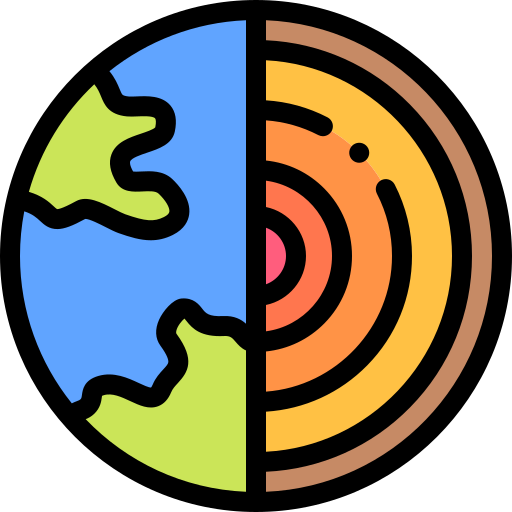Maybe I missed it, but I don’t think they ever elaborated on the distinct dangers of nano plastics when compared to micro plastics. Does it just exacerbate the micro plastic issue, or are there unique issues that will come from nano plastics?
From the article:
Studies have shown that nanoplastics are probably more dangerous for living organisms than microplastics because they are more abundant and reactive.
If rotifers can produce 13.3 quadrillion nanoparticles a day in Poyang Lake, then the amount created worldwide is immeasurably greater. Each microplastic could theoretically be broken down into 1,000,000,000,000,000 nanoplastic particles, which are then more easily spread.
Some quotes from the linked study “Nanoplastics are potentially more dangerous than microplastics”:
Overall, nanoplastics are more reactive, more abundant, and they can reach more remote locations and penetrate more easily into living cells.
…
However, very little is known on the behaviour of nanoplastics in humans and in the environment. Such measurements should be part of future research on the formation, degradation, and toxic effects of nanoplastics.
…
Remarkably, microplastics and nanoplastics can be simultaneously sources, carriers and sinks of a wide range of environmental pollutants (Alimi et al. 2018). For instance, plastics such as low- and high-density polyethylene, polyamide, and polyethylene terephthalate can release their original monomers such as ethylene and terephthalic acid into the environment (Kumar et al. 2020; Zhang et al. 2021). Furthermore, additives such as phthalates, flame retardant, organotins, triclosan, and bisphenol may also be released during the degradation of microplastics and nanoplastics (Sait et al. 2021). Some of these additives being carcinogenic and endocrine disruptors, they are of high concern for the health of humans and ecosystems (Alabi et al. 2019). There is also a likelihood of toxic metals adsorption on the surfaces of microplastics and nanoplastics. Sorption of organic contaminants is another possibility of enhanced contamination of aquatic environments. Concentrations of persistent organic pollutants on microplastics were found much higher than in surrounding natural waters (Matijaković Mlinarić et al. 2022; Wagstaff and Petrie 2022). Interactions of inorganic and organic contaminants with microplastics and nanoplastics would potentially increase the risks associated with the ingestion of plastic particles. Microplastics and nanoplastics may also participate in long-term sequestration of pollutants in soils and sediments, followed by pollutant ‘resurrection’ in the biosphere to induce toxicity (Mottes et al. 2021).
…
Overall, more research is needed to assess the role of nanoplastics in the safety of human populations and aquatic species. Research may focus on mechanistic studies to evaluate the influence of temperature, salt content, and pH, and the sorption patterns of different pollutants on plastic surfaces. The studies may also include transfer mechanisms of contaminants among different types of microplastics and nanoplastics and other materials. Accumulation of microplastics and nanoplastics in plants and animals may cause food chain contamination, and identification of food safety risks. Similar investigations on transferring pollutants adsorbed on microplastics and nanoplastics in water and sediments may shed light on their risks to the ecosystems.At the very end they say that because nanoplastics are more numerous and more reactive than microplastics it’s believed that they’ll be more harmful because of that.
I’m confused as well. I thought the idea was that things that ate the plastic would then die and sink to the bottom of the ocean thereby taking it out of the environment.
sink to the bottom of the ocean
would mean that they still exist in the environment
kinda feels like what’s been happening is the perpetuation of news that ingrains “out of sight out of mind” mentality
btw this isn’t a criticism against you and more with some news organizations
Edit: I misunderstood please see comment chain below
I thought the nuance of what I was saying would be recognized by communities like this.
Yes, technically it still exists in the environment. Nothing is ever made to not exist. What I meant was that it would no longer be able to be ingested by any creatures. This is after all where our petroleum deposits came from, millenia of plankton and other creatures dying and being covered up by other matter.
ahh I see
thank you for the clarification as it seems I misunderstoodWhat I meant was that it would no longer be able to be ingested by any creatures.
fair enough, this I can definitely get behind +1
This is the best summary I could come up with:
But rather than providing a solution to the threat plastics pose to aquatic life, the tiny creatures known as rotifers could be accelerating the risk by splitting the particles into thousands of smaller and potentially more dangerous nanoplastics.
The scientists sought to examine what role aquatic life might play in microplastic creation, especially after the discovery in 2018 that Antarctic krill are able to break down polyethylene balls into fragments of less than one micrometre.
Baoshan Xing, a professor of environmental and soil chemistry at the University of Massachusetts Amherst’s Stockbridge School of Agriculture, said they decided to look at rotifers because they had specialised chewing apparatus similar to krill.
After exposing marine and freshwater species of rotifers to a variety of different plastics of different sizes, they found all could ingest microplastics of up to 10 micrometres (0.01mm), break them down and then excrete thousands of nanoplastics back into the environment.
Microplastics have contaminated every corner of the planet, from the top of Mount Everest to the depths of the Mariana Trench, and research has shown they are in many humans’ blood and heart tissue and the placentas of unborn babies.
Jian Zhao, a professor of environmental science and engineering at the Ocean University of China and the paper’s lead author, said nanoplastics were not only potentially toxic to various organisms but served as carriers for other contaminants.
The original article contains 625 words, the summary contains 229 words. Saved 63%. I’m a bot and I’m open source!





